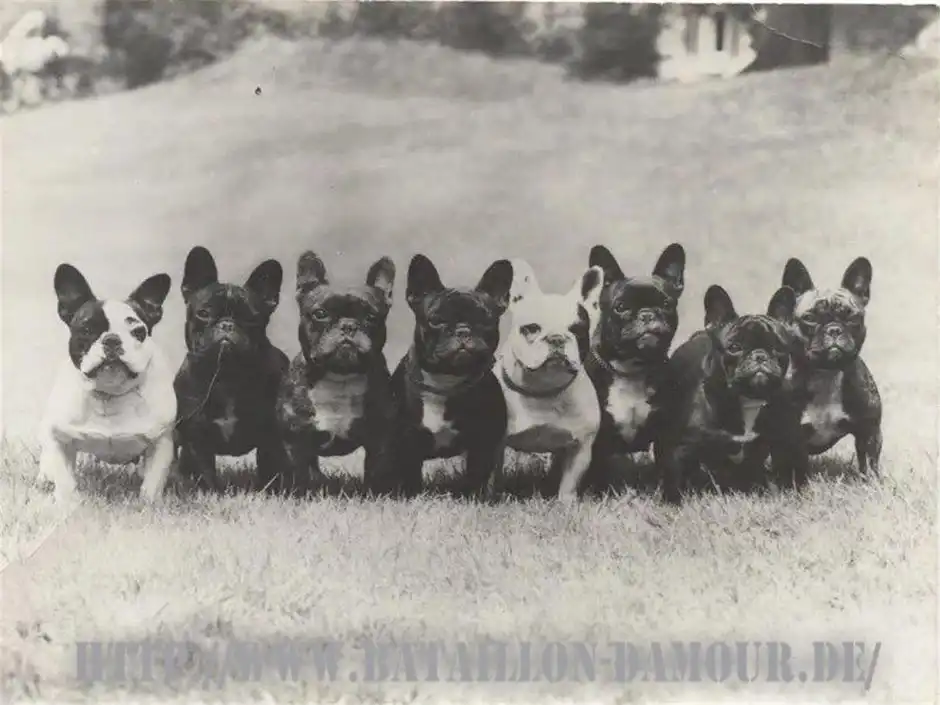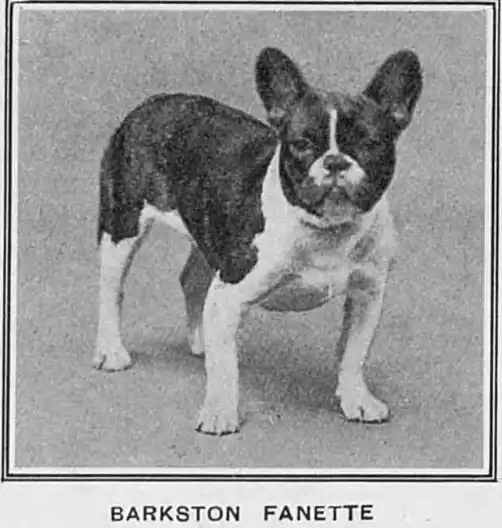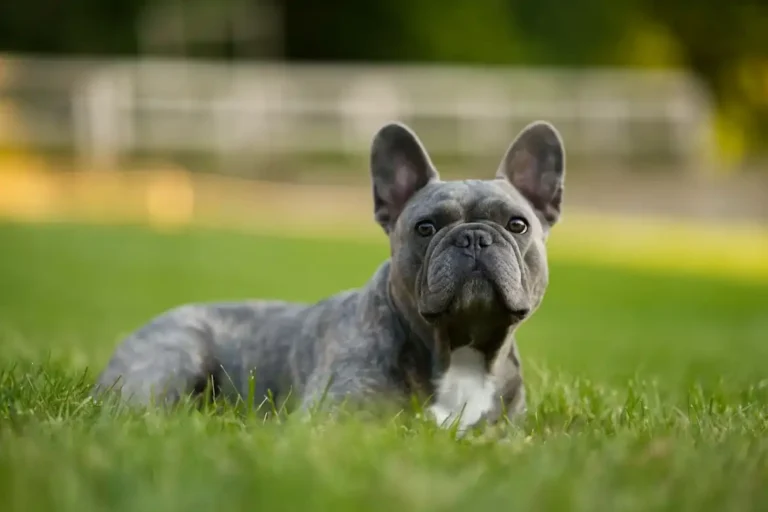The History of the French Bulldog
The Toy/Miniature Bulldog is a selection of the old-style English Bulldog, which was bred to be smaller and is one of the basic forms of the French Bulldog. Due to the growing popularity of the French Bulldog, it is now extinct. There are always breeding projects attempting to breed a type of miniature bulldog. Due to a lack of expertise and the lack of conclusive documentation, no one can even begin to show success.

The true story of the French Bulldog!
Through various crossbreedings, such as miniature bulldogs (some of which probably included the Chincha Bulldog), Boston, Belgian Griffon, Pug, and several other dog breeds, what we now call a Frenchie emerged. This may reveal some of the secrets!
Until now, it has not been possible to confirm with certainty that blue was one of the first colors of the French/Toy Bulldog. Research has shown that this color appeared repeatedly around 1900. The claim that this color was not desired at the time and puppies were killed can be refuted. The standard at the time permitted all colors. In fact, however, dark brindle was the color of its time and blue was sold for a lower price.
The color probably comes from the blue terriers that were popular at the time. In the course of further research, entire lines with carrier and pointer colors were discovered right from the beginning, and especially from the 1930s onwards. Even then these animals were rare and as soon as a breeder had imported one of these animals two matings were made and from each of these one bitch and one male was kept so that the line could be reached again in the next generation and these colors could be reached quickly.
The colors were loved even then and hated by some. However, colors like blue and liver spread all over the world and were always specifically bred by some as a complement. There are hardly any pictures of these dogs in the current databases. Every now and then they were mentioned in the press, though.
The claims that the color blue makes you sick are also a fairy tale of the last few years and we have the Doberman to thank for that, where the blue gene in conjunction with various other genes confirmed CDA as a disease in this breed. In 2017 no one can provide proof that there is even one case of CDA in the French Bulldog. Source: Biofocus Dr. Wagner.
Since it can’t be genetically tested, the only remaining evidence is through a microscope, and it only concerns a change in the coat, where the hair essentially breaks off at the root. There’s no way to link it to other diseases such as immune deficiencies, allergies, or other factors, which has now been confirmed by geneticists.

When you think of the Titanic, you don’t necessarily think about animals or dogs. There were 12 dogs on the ship, of which 3 survived the disaster. The only French bulldog passenger went down with the ship. Most of the dogs belonged to wealthy Americans who traveled first class as the fare for a dog was the same as that of a person floating.
One of these owners was Robert Daniel, a 27-year-old banker who brought with him a brindle French bulldog named Gamin de Pycombe. Gamin was born in January 1910 and was just two years old when he died. His breeder was Gwendoline Romilly who later became known under the “Taplow” kennel. He was sired by CH Charlemagne of Amersham, a French import to the UK who became England’s first Pied Champion Frenchie and who went on to be the first Frenchie to be imported into both the UK and the USA. Mr. Daniel had purchased the dog in England for a very high price of 150 pounds (approximately 11,000 pounds or $17,000 in today’s money). Stories later told by survivors said that Daniel’s Frenchie was in his cabin, rather than in the well-equipped kennel on board, when the ship went down.
It was testified by passenger Edith Russell that Gamin de Pycombe was in his master cabin, which was near her. She remembered hearing him whimpering as she used the walkway along the way to the upper deck after the ship struck the iceberg. She said she came in to calm him and put him to bed. In a 1966 interview, she said: “The dog was frightened, so I stroked him and put him in his bed.
He was very obedient and sat there looking at me sweetly as I closed the door. At the time, I didn’t know we were in grave danger, or I would have taken him with me.” Another surviving passenger later reported seeing a French bulldog swimming in the sea, so evidently someone didn’t survive Gamin de Pycombe. As we researched this story, we also made the necessary entries in Ingurus so that it is preserved for posterity.
Today he would be called a tiger brindle or reverse but one thing is certain: Fawn didn’t just produce fawn, he is E/e and carries cream.
Later matings and line breeding also produced Cream puppies, which have now been confirmed by several breeders. He is also likely a Tan dam, as his granddam, GABRIELLE OF SILPHO, was a Trindle. Over the next few years, Schoko also appeared repeatedly through these lines through extended lines.
In 1945, there were 134 French Bulldogs registered worldwide, and by 1949, the number had increased to 221 thanks to the ambition of some breeders.
It’s hard to believe, but without the efforts of breeders like Mrs. David Sudgen, the French Bulldog would probably have become extinct.
For this reason, in 1947 a dog was bought from Captain Bryan Watkins, who was stationed in Germany, and sold on to Mrs. Sudgen. This dog was bred by a German breeder and was called a Bomlitz Mix von Schubinsdorf in Dark Brindle, which was born in 1947.
On this topic, she said that she could understand how it must look for a dog that came from France with a long history in England to be supplemented by German blood. But she was also aware that at that time everything was related to one another and it was not the first time that she had relied on foreign blood. Years before, she had already bought a dog from Mrs. A. Schmidt, who had the one from Leesdorf!
So it was not surprising that black and tan as well as chocolate were among the colors (Dark Brown was entered at Cruft in 1922).

Further standard changes regarding color were made between 1931 and 1932. The problem was that due to the lack of fawn, the original brindle, which we would call tiger, became darker over the years. Dark brindle was considered fashionable at the time, and it was found that the dogs were almost black and lacked life in the brindle.
The color should have a medium density and black is very unflattering!
- Another change was:
To ensure the reliability of Brindle, the color black and tan are disqualified, we have graded colors and anyone can show them.
Other countries followed suit and Dark Brindle became the color of their time and Black and Tan was about to die out.
In the course of further changes, the attempt to breed white animals was stopped and white was not allowed to dominate in the standard.
This experiment had resulted in a defect, and at the time, it was unclear how to control it through breeding (deafness).
This color theme continues throughout the standard to this day, and over the years, attempts that did not fit with the prevailing views of the time have been repeatedly stopped.
Therefore, Blue, Black and Tan, Black, White was considered a serious fault.
Even breeding projects that had particularly good intentions, such as Cream, which was intended to produce an almost white dog that could not be deaf, were not very well received and even today this colour is sometimes more and sometimes less banned.
The shortening of the nose was counteracted with a clear message: the nostrils should be large and wide open.
The original character description was: A French Bulldog should have a strong character, be active and very intelligent.







One Comment